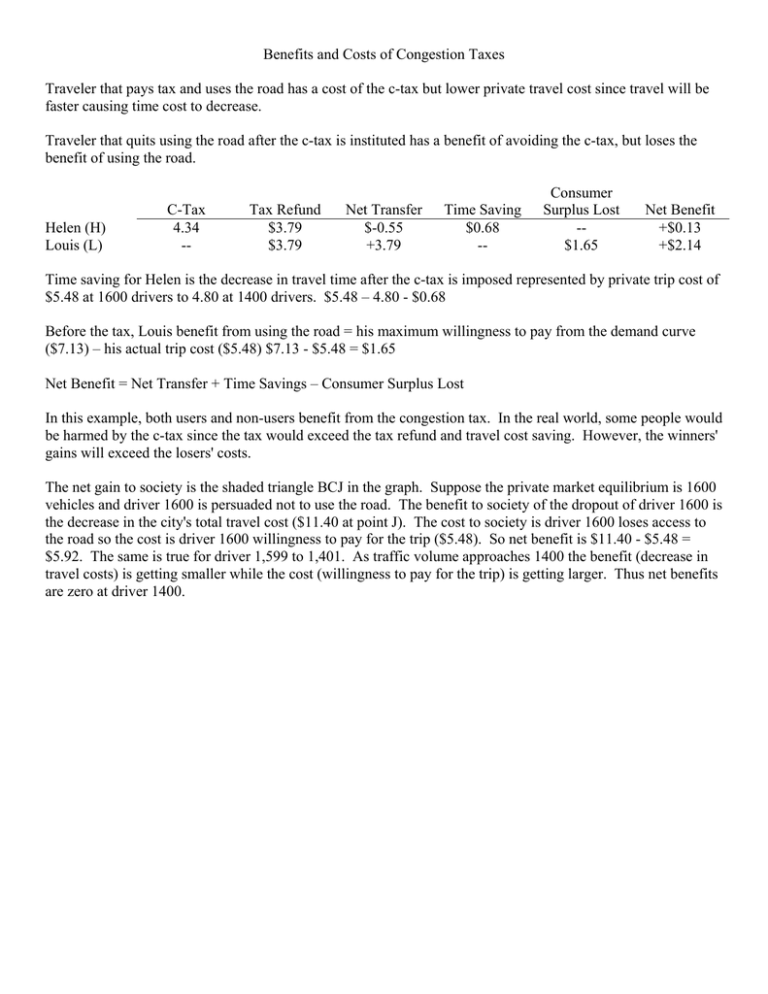Benefits and Costs of Congestion Taxes
advertisement

Benefits and Costs of Congestion Taxes Traveler that pays tax and uses the road has a cost of the c-tax but lower private travel cost since travel will be faster causing time cost to decrease. Traveler that quits using the road after the c-tax is instituted has a benefit of avoiding the c-tax, but loses the benefit of using the road. Helen (H) Louis (L) C-Tax 4.34 -- Tax Refund $3.79 $3.79 Net Transfer $-0.55 +3.79 Time Saving $0.68 -- Consumer Surplus Lost -$1.65 Net Benefit +$0.13 +$2.14 Time saving for Helen is the decrease in travel time after the c-tax is imposed represented by private trip cost of $5.48 at 1600 drivers to 4.80 at 1400 drivers. $5.48 – 4.80 - $0.68 Before the tax, Louis benefit from using the road = his maximum willingness to pay from the demand curve ($7.13) – his actual trip cost ($5.48) $7.13 - $5.48 = $1.65 Net Benefit = Net Transfer + Time Savings – Consumer Surplus Lost In this example, both users and non-users benefit from the congestion tax. In the real world, some people would be harmed by the c-tax since the tax would exceed the tax refund and travel cost saving. However, the winners' gains will exceed the losers' costs. The net gain to society is the shaded triangle BCJ in the graph. Suppose the private market equilibrium is 1600 vehicles and driver 1600 is persuaded not to use the road. The benefit to society of the dropout of driver 1600 is the decrease in the city's total travel cost ($11.40 at point J). The cost to society is driver 1600 loses access to the road so the cost is driver 1600 willingness to pay for the trip ($5.48). So net benefit is $11.40 - $5.48 = $5.92. The same is true for driver 1,599 to 1,401. As traffic volume approaches 1400 the benefit (decrease in travel costs) is getting smaller while the cost (willingness to pay for the trip) is getting larger. Thus net benefits are zero at driver 1400.

